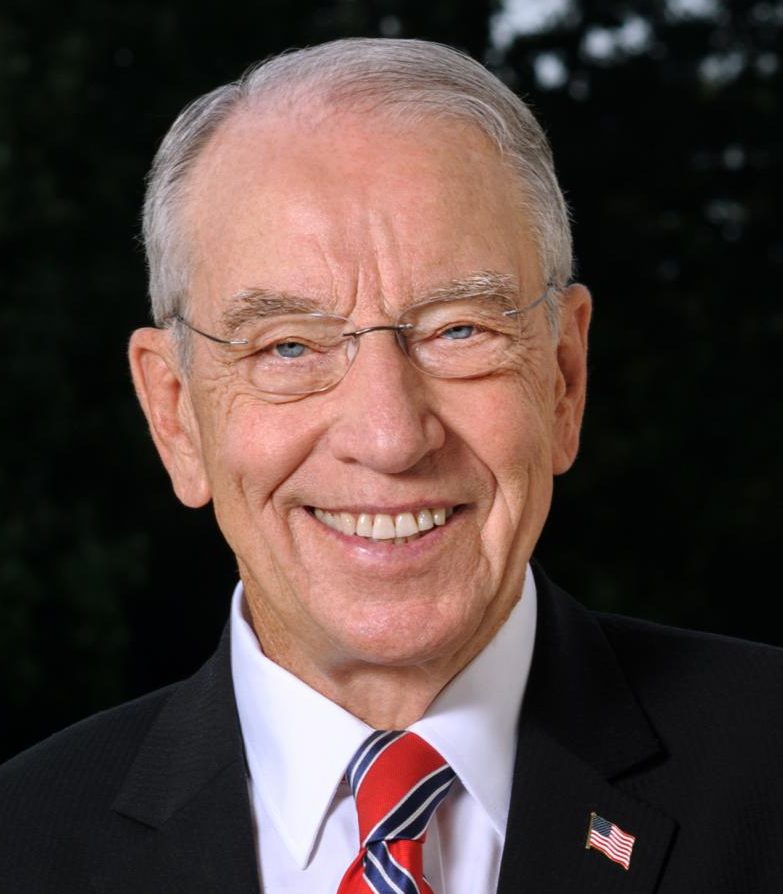Q: Are you concerned about food insecurity in 2022 and beyond?
A: During the COVID-19 pandemic, more Americans experienced food insecurity as unemployment and empty store shelves produced uncertainty around kitchen tables in households across the country. Moms and Dads struggled to put food on the table and worried about sending their kids to bed hungry. According to the USDA, more than 38 million people in the United States lived in food-insecure households in 2020. As COVID-19 spread across the country, Congress boosted spending for food pantries and nutrition assistance programs to help Americans who lost their jobs feed their families. I worked to expand flexibilities in the USDA summer food service program to maximize its utility during the summer months when kids aren’t in the school building. When I visited food banks in Pocahontas and Waterloo, I saw neighbor helping neighbor to help hungry families in times of need. Today, more Americans are turning to local food banks to feed their families as inflation outpaces their wages.
Food insecurity looms large on the horizon and could impact even more people due to soaring fuel and food prices and war-torn Ukraine. The international food price index that tracks prices of globally traded food commodities reached its highest point this spring since recording began in 1990. Since last June, the producer price index here in the U.S. increased 11.3 percent. Prices paid by American consumers spiked 9.1 percent, the fastest clip since Nov. 1981. The primary inflationary culprit is rising energy costs. Families are getting hammered from one week to the next at the gas pump and the grocery store. According to the Bureau of Labor Statistics, the prices of cereal, bread and chicken rose 14.2 percent, 10.8 percent and 17.3 percent on an annual basis. The rising fuel costs, particularly diesel, adds to higher food prices on the shelves. Surging input costs for farmers to grow the food, particularly fertilizer and diesel fuel, contribute to higher prices to get the food from farm to fork. Truckers are paying more than double to fill up their tanks and deliver food to stores and restaurants around the country.
Q: What are you doing to help lower costs and alleviate tight supplies?
A: I’m leading the charge to help lower costs at the grocery store. The Big Four Packers control more than 85% of the market and use anti-competitive tactics to box-out smaller producers. That means independent farmers in Iowa are forced to sell livestock at dirt cheap prices, and consumers pay through the nose for beef at restaurants and grocery stores. This is happening as the Big Four packers reap record profits. Sysco, the largest food distributor in the U.S., recently filed a lawsuit against these packers alleging price fixing. They claim these packers intentionally reduced the number of slaughtered cattle to inflate beef prices that families are forced to pay. We must maintain a cash market for cattle producers and increase competition. My two bipartisan bills that sailed through the Senate Agriculture Committee would do just that.
In July, I joined farm state lawmakers and urged the Biden administration to waive import duties on fertilizer from Morocco and Trinidad and Tobago. They export phosphate fertilizer subject to import tariffs and that’s compounding inflationary prices on key ingredients to get crops in the ground. The rising cost of fertilizer is compelling farmers to apply less than recommended soil nutrient rates. That will impact productivity, lead some growers to switch to alternative crops and disrupt a reliable supply of protein staples and increase food insecurity in America and around the world. A competitive price for fertilizer is critical to food security, national security and national defense. What’s more, the import duties exacerbate the fragility of the global food supply due to Russia’s unprovoked invasion. Ukraine is a key exporter of farm commodities and often referred to as the breadbasket of Europe and a primary supplier of grain throughout the Middle East and Africa. The war zone in Ukraine has disrupted the growing season and as the war ravages on, its ports are under siege and sea lanes are blocked by Russia. Rising food and fuel prices combined with the ongoing war in Ukraine have the potential to create a perfect storm of social unrest, food riots and famine in the developing world.
Here in Iowa, food banks and mobile food pantries are experiencing rising need as food costs continue to climb. Food Bank of Iowa serves 55 of our 99 counties and partners with volunteers and community businesses to fill local pantries and serve hungry neighbors. It reported serving its highest number of individuals in its 40-year history in May. Pantries supplied by the River Bend Food Bank report feeling the pinch as donations dwindle with less food on store shelves available to donate. As the cost of fresh fruit, meat and eggs continues to climb, cash donations aren’t stretching as far to buy food and local pantries are challenged to help keep families with children, seniors and veterans hunger-free in their communities. In Washington, I’ll keep fighting inflation so wages aren’t guzzled up at the pump and grocery store. I’m also fighting tax increases so Iowans can keep more of their hard-earned money to make ends meet. Iowans looking for more information on local food pantries may call 211. Or visit https://www.iowafba.org/partner-food-banks.
















